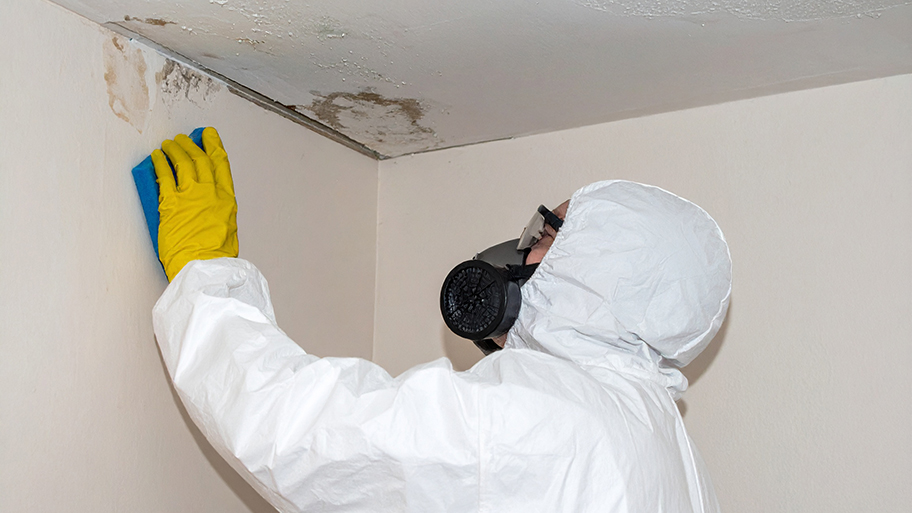
The cost of a mold inspection might seem high, but it’s one of the best investments you can make for your health and home. Read on to learn cost-saving tips.
Sometimes, you have to clean the machine that cleans


Clothes and linens should come out of the wash smelling fresh and clean. If your clothes come out smelling like mold, or if you see visible signs of mold, it's time to give your washing machine a good cleaning. This guide will show you how to clean mold from a washing machine, so your laundry smells fresh and clean.
The first thing you need to decide when cleaning your washing machine is whether you're team vinegar or team bleach. Both will do the job of killing and removing mold. Both have a strong odor.
Vinegar is a natural mold killer and may be slightly more effective at killing mold on porous surfaces than bleach. You also may feel more comfortable choosing vinegar over bleach if you have small children or pets at home, as vinegar fumes are less powerful and it's less toxic than bleach.
Mix 1/4 cup of bleach with 2 cups of hot water in a small bucket, or mix distilled white vinegar and warm water together with a 1:1 ratio, such as one cup water and one cup vinegar. Pour the vinegar/water solution or bleach/water solution into a spray bottle.
Spray the solution onto the rubber gasket around the washing machine door. Let the solution sit for about 15 minutes or longer if there's a lot of mold buildup.
Use the toothbrush to scrub away the mold, then wipe with the towel.

Repeat the process, spraying the washing machine drum, filters, and the detergent dispensers with the vinegar/water or bleach/water solution. Let the solution sit, then scrub with the toothbrush and wipe with the towel to clean away the mold.
Run a washing cycle using the longest cycle setting and the hottest water available.
If you have a top-loading machine, pour either 2 cups of vinegar or 1 cup of chlorine bleach into the washing machine drum. Turn on the washer and let it run a full cycle empty.
If you have a front-loading machine, pour the 2 cups of vinegar into the detergent dispenser or the 1 cup of bleach into the bleach dispenser, then run the machine empty.

Once the wash cycle is finished, open the door of the washing machine and dry the inside of the drum and around the gasket. Leave the washing machine door open to help it air out and prevent future mold growth.
The most common places where mold grows are on and behind the door seal, under the agitator in top loaders, and in the detergent tray. However, mold can appear anywhere water is left standing after washing, including on the surfaces of the drum and door or lid.
While top-loading washing machines are less prone to mold growth than front-loaders, mold remains an issue regardless of which type you have. Mold growth occurs in washing machines because of the leftover soap and water residue that remains after washing and a lack of sufficient air movement to dry it out in a timely manner.
There are several simple steps you can perform to reduce the likelihood of mold growth in your washing machine.
Remove your wet laundry from the machine shortly after you complete a load.
Immediately wipe the door seal to dry it as much as possible. Also, wipe away any other standing water droplets from the lid, door, drum, or agitator.
Leave the door or lid and detergent tray open when the machine isn't in use.
Avoid using too much detergent or fabric softener for the amount of clothes in a load.
If necessary, run a dehumidifier to keep the humidity in the laundry room or area below 50%.
Periodically perform a thorough cleaning of your washing machine.
Consider using a laundry additive designed to reduce mold growth.
Consider running an occasional hot-water cycle with added bleach or vinegar (but never both together), or run sanitary cycles from time to time if your machine offers the feature.
You can most likely tackle cleaning mold from your washing machine on your own. However, if you have a larger mold problem throughout your home, it's usually best to hire a local mold removal company. A professional mold mitigation company can remove mold from other areas of your home and give you advice on how to keep mold from coming back.
From average costs to expert advice, get all the answers you need to get your job done.

The cost of a mold inspection might seem high, but it’s one of the best investments you can make for your health and home. Read on to learn cost-saving tips.

Mold remediation cost can quickly escalate. But if you have mold in your home, the cost for mold remediation is worth it.

Find out how mold sneaks into crawl spaces and impacts your home and health. We unveil the most effective remedies for kicking mold to the curb.

These tips will safeguard your home from mold growth after water damage. Protect your house and your health with these expert mold prevention strategies.

Who pays for mold remediation? Your homeowners’ or property insurance may help you pay some of the cost of removing mold, but it depends on the situation.

If you suspect mold in your home, or even outside, you need to hire the right pro to confirm its presence. Learn who to call for mold inspections to keep your home fresh.